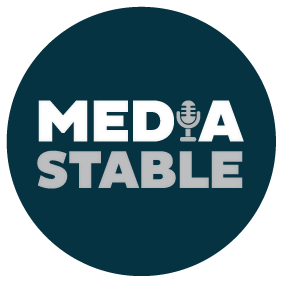One size doesn’t fit all for pitching to media
Ever wondered why your content slots perfectly into print, but you just can’t get something over the line for TV or radio?
It’s because every media outlet has certain elements they look for when they’re considering a story. Their secret sauce if you will… the perfect recipe to entertain, educate and inform their viewers, listeners, or readers.
What’s considered a cracking yarn for radio, may not work for TV, and knowing which media wants what, and tailoring your pitch accordingly, can be the difference between success and failure.
When it comes to radio, the first element is talent. Who will tell the story, explain an issue, reveal new research, or offer a strong opinion on a topical subject? News-talk radio is drawn to a story or issue that impacts their listeners and making someone available for interview who’s “good talent” (entertaining, a great storyteller, and well versed on the subject) is a big drawcard.
Some people are naturally confident speakers and do well in radio interviews. Others may need media training to become comfortable with the format. Make sure whoever you offer as interview talent wants to do it, is across the issue, and is a confident speaker.
FM radio, particularly breakfast shows and networked Drive shows, will be looking for stories that suit their demographic and tone of the show. Do your research before pitching, and make sure your story fits their format, presenter, and style.
When it comes to TV, it’s all about the pictures. What can a TV news crew film, who can they interview on camera, what B-roll or additional vison can you offer them? Without pictures, even the best story will be relegated to a live voice over, where the presenter reads the script as still images or file vision appears on screen and is usually only 20 to 30 seconds long.
Make sure you have a location, case study (if appropriate) and talent all available before you pitch to TV. If you have these elements in place, and a strong news angle, you’re giving yourself the best chance of success.
Consider too, the type of show you’re pitching to – weekday and weekend breakfast TV will do a mix of hard news and lighter stories, and morning TV looks for lifestyle content. Panel shows such as The Project, Insight or Q&A, will be on the lookout for expert talent who are good TV performers and willing to have a strong opinion.
When it comes to print and online, most reporters require an interview, so make sure you have the talent, a spokesperson and case studies available when you pitch. For print and online, pictures are important, so have good quality photos available to accompany your pitch, and/or offer to arrange a time for the media’s own photographer to take their own photos.
Reporters like to get out of the office, so when appropriate – such as the opening of a new business or facility – offer them the chance to look in person.
Newspapers and online news are one form of media who like additional information, as it helps reporters to better understand an issue, and can provide background, and context. If you pitch by email, attach extra information, but make sure it’s relevant.
The team at Media Stable are pitching to media every day, and understand not only the nuances of pitching, but also know the story preferences for hundreds of producers, reporters, radio and TV shows across the country.
So, if your media pitches aren’t landing, contact us here, we can help you ensure it gets the coverage it deserves.
